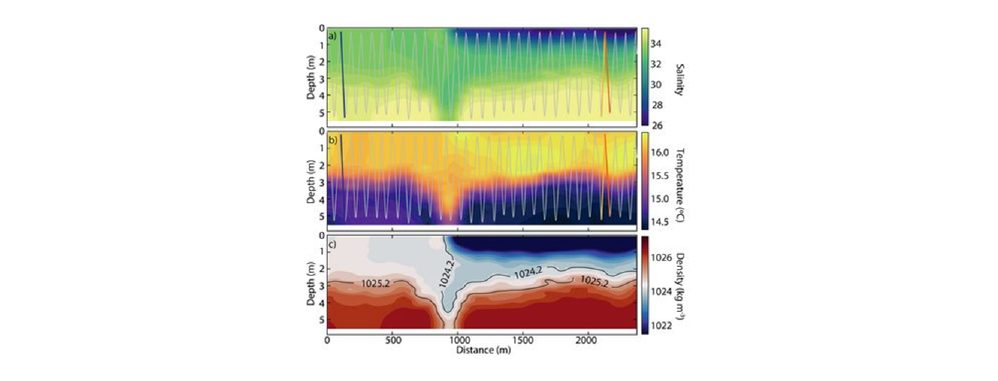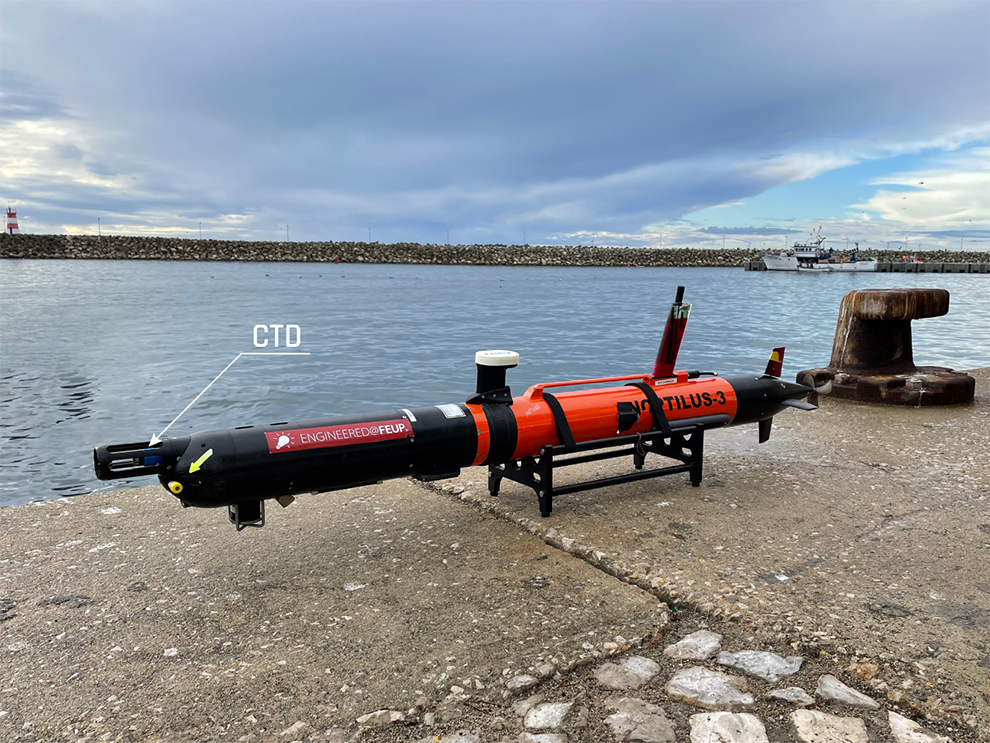CTD
CTD stands for Conductivity, Temperature, and Depth and refers to an instrument that includes electronic devices used to detect how the conductivity and temperature of water change relative to depth. When conductivity is measured, so is salinity because electric currents pass through the water of a higher salinity more easily. Temperature is measured using a thermistor, and Pressure is measured with a strain gauge pressure monitor or a quartz-based digital pressure gauge. Once pressure is measured in decibars, a conversion can be done to measure depth. When combined with temperature data, salinity measurements can be used to determine seawater density, which is a primary driving force for major ocean currents.Therefore, CTD is an essential tool used in all disciplines of oceanography, providing important information about the water column's physical, chemical, and even biological properties.
A CTD can be deployed independently or incorporated into various observing platforms such as research vessels, remotely operated vehicles, gliders, AUVs or even fixed observing buoys.


